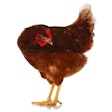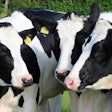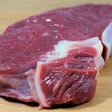
For almost the first time this year, no new outbreaks of highly pathogenic avian influenza (HPAI) in domestic poultry have been officially reported in 21 European Union (EU) member states and selected adjacent states.
So since the start of 2023, the totals of 385 outbreaks of HPAI in commercial poultry, based on reporting to the European Commission (EC) through its Animal Disease Information System (as of August 20).
As in the previous edition dated August 4, the number of countries reporting cases in poultry remains at 21. It includes two regions not belonging to the continent of Europe — namely Turkey (Tűrkiye) and the French overseas territory of Reunion.
The European country with the most confirmed outbreaks — 152 — is France.
However, the French veterinary authority has officially declared the long-running outbreak series “resolved.”
Since November of 2021, the national veterinary authority registered a total of 1,775 outbreaks linked to the H5N1 virus serotype on poultry farms to the World Organisation for Animal Health (WOAH). Directly affected through mortality or culling were more than 21.6 million commercial birds.
No new cases have been reported since July 11, according to the agriculture ministry.
Later in the same month, the ministry published plans to avoid a further devastating wave of HPAI hitting its poultry industry in a third successive season. These plans include the limited use of vaccination.
Separately, the EC System also records HPAI outbreaks among captive birds.
Covering backyard poultry, zoos and similar premises, 15 countries have together reported a total of 89 outbreaks in this category to the EC so far this year. These figures are also unchanged since the start of August.
More outbreaks in farmed birds in Russia, Scotland
The disease situation in Russia and the United Kingdom (U.K.; except Northern Ireland) is not included in the EC’s System.
In Russia, the Republic of Bashkortostan had experienced a prolonged hiatus from HPAI since December of 2021. However, in early August, the H5N1 virus was detected again at a farm following a spike in mortality. Almost 3.2 million poultry were at the farm, according to the WOAH notification. Their fate was not reported.
Bashkortostan is located in Russia’s Volga federal district.
Meanwhile, the number of HPAI outbreaks in poultry in Scotland continues to rise.
With WOAH, six further outbreaks linked to the H5N1 virus variant have been recorded. Affecting two small flocks of free-range laying hens and four of pheasants reared for shooting, all started in the period August 1-11. Outbreaks are widely distributed, including three in Aberdeenshire in the east, two on the Isle of Lewis (Western Isles), and one in Dumfries and Galloway in southwestern Scotland.
Since the WOAH report, three further outbreaks have been confirmed by the Scottish Government. Details of the birds and flock sizes are not specified, but the locations include one more premises on the Isle of Lewis and Dumfries and Galloway, and one in Angus, which is adjacent to Aberdeenshire.
These bring to 33 the number of confirmed HPAI outbreaks in Scotland since the start of 2023, including nine so far this month.
Further spread of HPAI in wild birds
Over the period August 4-20, 12 European states registered with the EC one or more cases of HPAI in their respective wild bird populations.
Up to the latter date, 3,225 outbreaks had been registered in 27 states of the EU member and adjacent states, according to the EC System.
For comparison, 33 nations registered a total of 3,245 outbreaks in wild birds with the EC’s system during the whole of 2022.
Germany continues to be the state with the most outbreaks (1,045 for the year to date). Next come France (393), and the Netherlands (366).
As well as Germany and the Netherlands, also registering more cases over this period were Belgium, Denmark, Finland, Italy, Latvia, Northern Ireland, Norway, Slovenia, Spain, and Sweden.
The U.K. veterinary authority reported to WOAH a further 24 cases of HPAI in wild birds.
More outbreaks linked to the H5N1 HPAI virus were detected on fur farms in Finland last month.
According to the latest notification to WOAH, there have been further mortalities of raccoon dogs and Arctic foxes at four more locations, all in the same region of Western and Inland Finland. So far, a total of 114 animals of four different fur species have died of the H5N1 virus infection at 24 of the country’s farms.
View our continuing coverage of the global avian influenza situation.


















